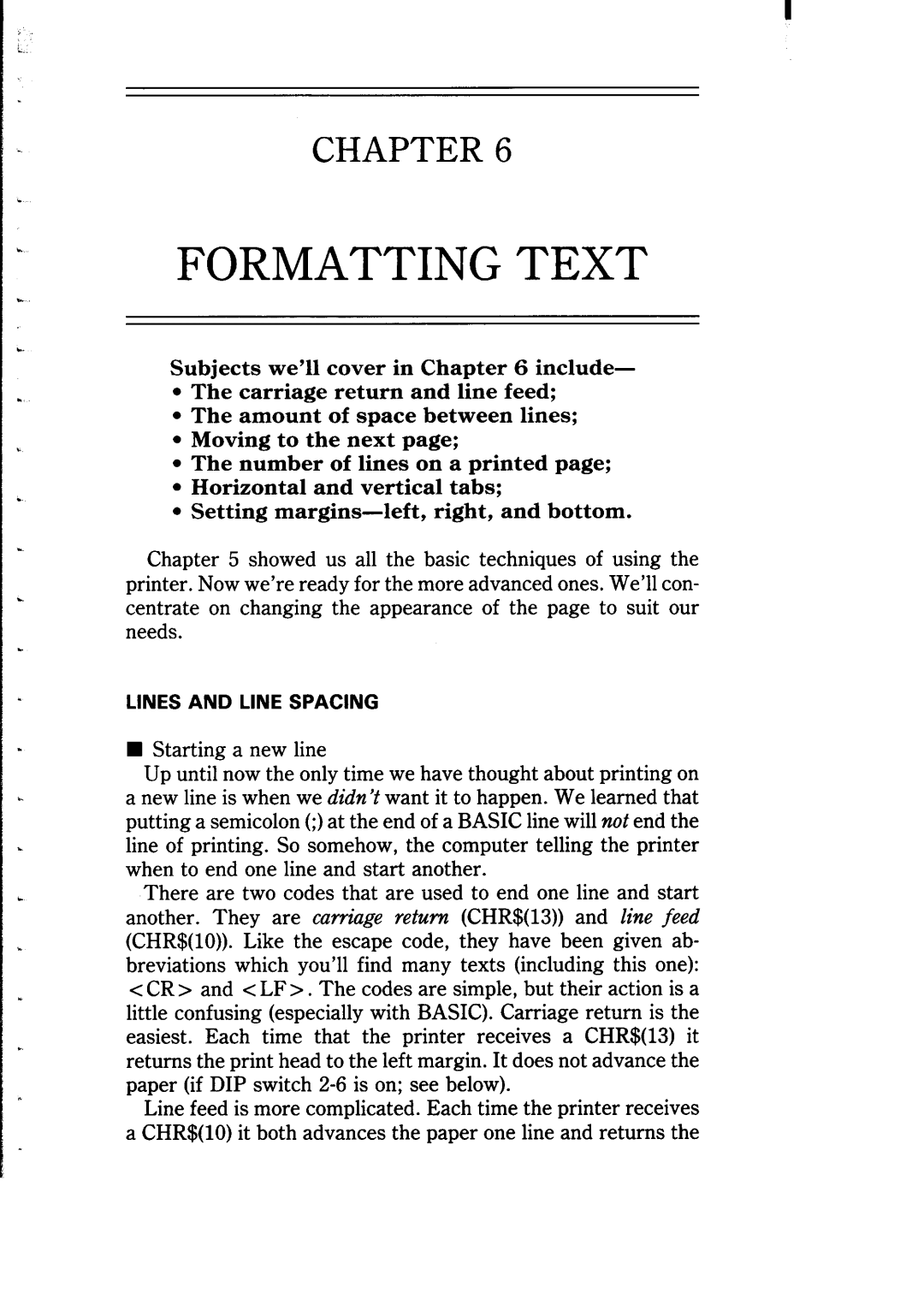
-
CHAPTER 6
FORMATTING TEXT
Subjects we’ll cover in Chapter 6 include- * The carriage return and line feed;
•The amount of space between lines;
•Moving to the next page;
•The number of lines on a printed page;
•Horizontal and vertical tabs;
•Setting margins- left, right, and bottom.
Chapter 5 showed us all the basic techniques of using the printer. Now we’re ready for the more advanced ones. We’ll con- centrate on changing the appearance of the page to suit our needs.
LINES AND LINE SPACING
nStarting a new line
Up until now the only time we have thought about printing on a new line is when we didn’t want it to happen. We learned that putting a semicolon (;) at the end of a BASIC line will not end the line of printing. So somehow, the computer telling the printer when to end one line and start another.
There are two codes that are used to end one line and start another. They are carriage return (CHR$(13)) and line feed (CHR$(lO)). Like the escape code, they have been given ab- breviations which you’ll find many texts (including this one):
<CR > and < LF > . The codes are simple, but their action is a little confusing (especially with BASIC). Carriage return is the easiest. Each time that the printer receives a CHR$(13) it returns the print head to the left margin. It does not advance the paper (if DIP switch
Line feed is more complicated. Each time the printer receives a CHR$(lO) it both advances the paper one line and returns the
